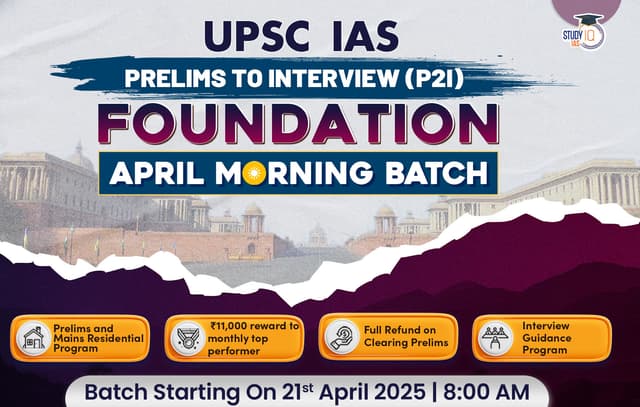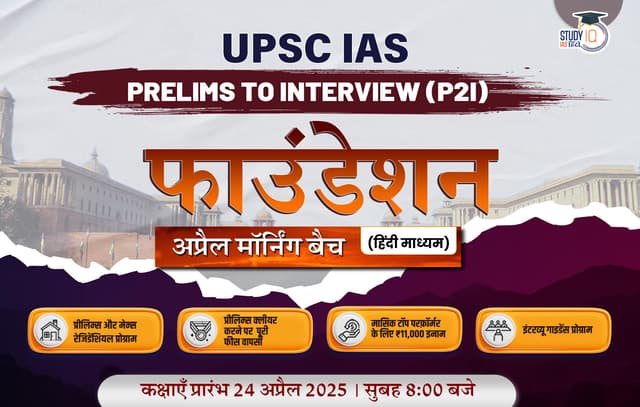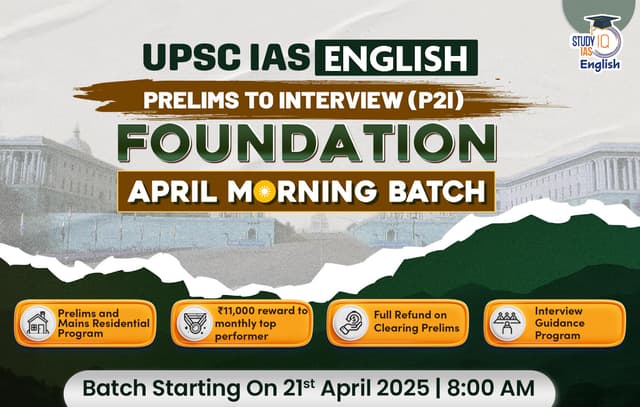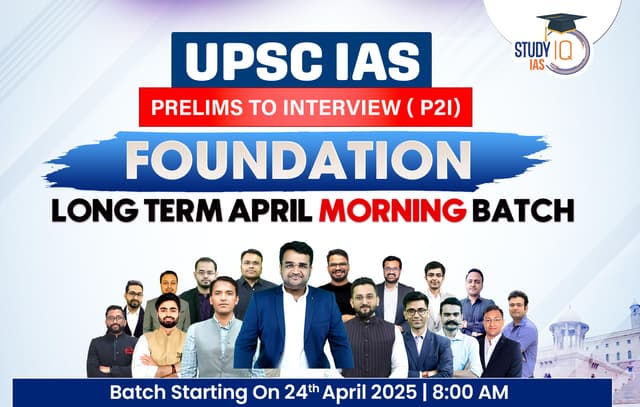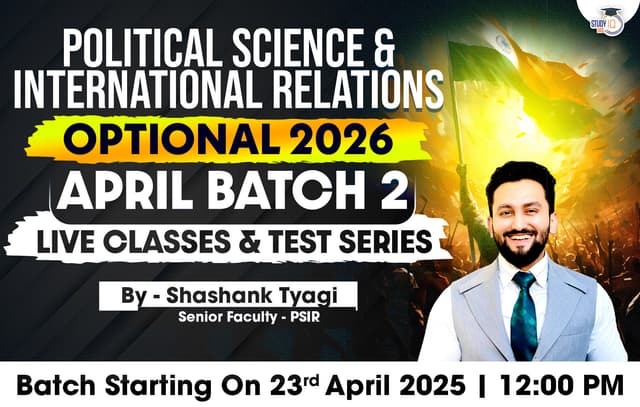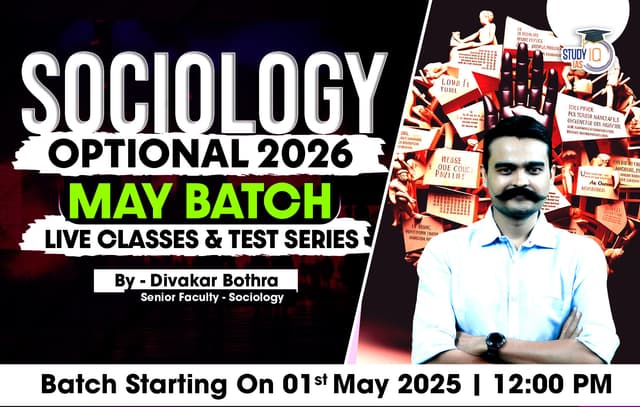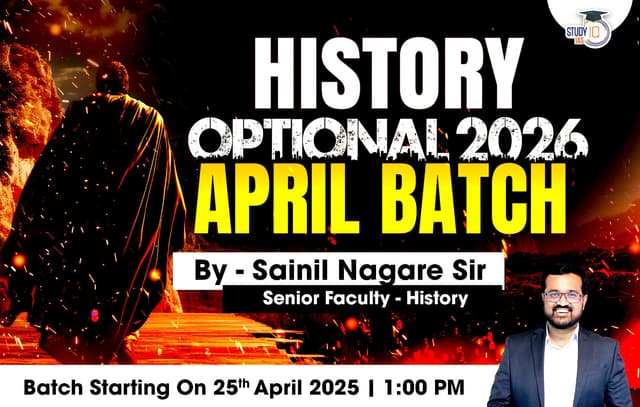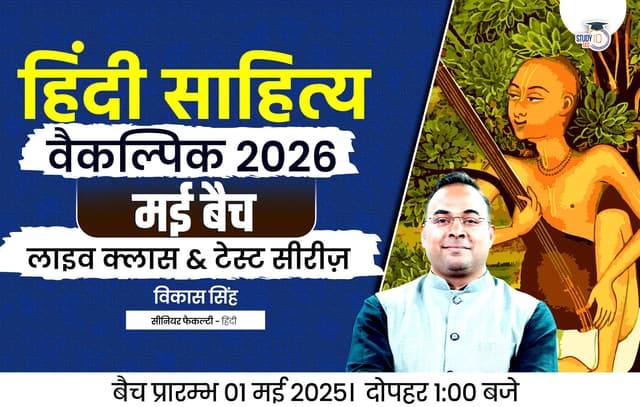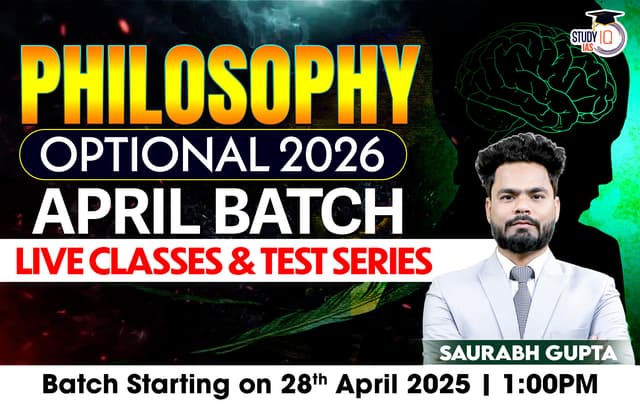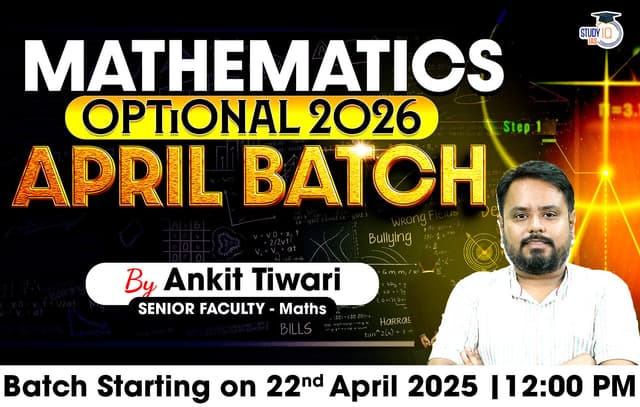Daily Quiz 21 February 2025
Quiz-summary
0 of 5 questions completed
Questions:
- 1
- 2
- 3
- 4
- 5
Information
- Click on – ‘Start Quiz’ button
- Solve Questions
- Click on ‘Next’ button
- Click on ‘Finish Quiz’ button
- Now click on ‘View Questions’ button – here you will see solutions and links.
- The test contains a total of 5 questions.
- Click on the most appropriate option to mark it as your answer.
- You will be awarded Two marks for each correct answer.
- You can change your answer by clicking on some other option.
- A Number list of all questions appears at the top side of the screen.
- You can access the questions in any order by clicking on the question number given on the number list.
- You can use rough sheets while taking the test.
- Do not use calculators, log tables, dictionaries, or any other printed/online reference material during the test.
- Do not click the button “Finish Quiz” before completing the test. A test once submitted cannot be resumed.
You have already completed the quiz before. Hence you can not start it again.
Quiz is loading...
You must sign in or sign up to start the quiz.
You have to finish following quiz, to start this quiz:
- 1
- 2
- 3
- 4
- 5
- Answered
- Review
-
Question 1 of 5
1. Question
1 pointsConsider the following statements:
1. Electronic Voting Machines (EVMs) were used for the first time in the by-elections in Kerala in 1982.
2. EVMs/are indigenously manufactured by Bharat Electronics Limited (BEL) and Electronics Corporation of India Limited (ECIL).
3. The candidates who come second and third in any constituency cannot apply for any verification of the EVMs.
How many of the above statements are correct?Correct
Answer: B
Explanation:
- EVM stands for Electronic Voting Machine. It is a device used to electronically record and count votes cast in elections. The Indian Electronic Voting Machine (EVM) system is also termed as ECI-EVM , meaning an EVM specifically designed, manufactured and used for Elections as per election procedure and rules framed by Election Commission of India and documented in manual on EVM , so as to differentiate it from EVMs used in other countries.
- Statement 1 is correct: Electronic Voting Machines (EVMs) consisting of Ballot Unit (BU) & Control Unit (CU) were used for the first time in the by-elections to Parur Assembly Constituency of Kerala in 1982.
- Statement 2 is correct: EVMs/VVPATs are not imported but indigenously designed and manufactured by two Public Sector Undertakings (PSUs) namely Bharat Electronics Limited (BEL), under the Ministry of Defence and Electronics Corporation of India Limited (ECIL), under the Department of Atomic Energy under the guidance of the Technical Experts Committee (TEC) constituted by the Election Commission of India.
Statement 3 is not correct: After the court order in April 2024, the EC came out with its SOP for checking and verification in July that year. The EC also decided to charge Rs 40,000 plus GST for each request. As per the Supreme Court order, the candidates who come second and third in any constituency can apply for checking and verification of up to 5% of the EVMs and VVPATs per Assembly segment.
Incorrect
Answer: B
Explanation:
- EVM stands for Electronic Voting Machine. It is a device used to electronically record and count votes cast in elections. The Indian Electronic Voting Machine (EVM) system is also termed as ECI-EVM , meaning an EVM specifically designed, manufactured and used for Elections as per election procedure and rules framed by Election Commission of India and documented in manual on EVM , so as to differentiate it from EVMs used in other countries.
- Statement 1 is correct: Electronic Voting Machines (EVMs) consisting of Ballot Unit (BU) & Control Unit (CU) were used for the first time in the by-elections to Parur Assembly Constituency of Kerala in 1982.
- Statement 2 is correct: EVMs/VVPATs are not imported but indigenously designed and manufactured by two Public Sector Undertakings (PSUs) namely Bharat Electronics Limited (BEL), under the Ministry of Defence and Electronics Corporation of India Limited (ECIL), under the Department of Atomic Energy under the guidance of the Technical Experts Committee (TEC) constituted by the Election Commission of India.
Statement 3 is not correct: After the court order in April 2024, the EC came out with its SOP for checking and verification in July that year. The EC also decided to charge Rs 40,000 plus GST for each request. As per the Supreme Court order, the candidates who come second and third in any constituency can apply for checking and verification of up to 5% of the EVMs and VVPATs per Assembly segment.
-
Question 2 of 5
2. Question
1 pointsConsider the following statements with reference to “Faceless Scheme of Assessment”:
- It has been launched as per the provisions of Income Tax Act, 1961.
- It aims to eliminate the direct interface between the Assessing Officer and the assessee for issues related to income tax.
Which of the statements given above is/are correct?
Correct
Answer: C
Explanation:
- Statements 1 and 2 are correct: Under the of ‘Faceless Assessments’ under Section 144B, all the letters, income tax notices, questionnaires, assessments, orders and other communications from the assessing authorities are directly sent electronically to the taxpayers’ registered ‘e-filing account‘. The taxpayer can submit the ‘e-responses’ electronically by uploading the same along with attachments on the ‘e-Filing’ portal. The ‘e-responses’ submitted by the assessee are viewed by the assessing authority electronically in Income-Tax Business Application (ITBA) module. The assessee is not required to have any personal interface or interaction with the assessing authority.
- Under section 144B, the Central Government’s Faceless Assessment Scheme aims to eliminate the direct interface between the Assessing Officer and the assessee, enhancing the process through technology. This optimises resource utilisation by leveraging economies of scale and functional specialisation
Incorrect
Answer: C
Explanation:
- Statements 1 and 2 are correct: Under the of ‘Faceless Assessments’ under Section 144B, all the letters, income tax notices, questionnaires, assessments, orders and other communications from the assessing authorities are directly sent electronically to the taxpayers’ registered ‘e-filing account‘. The taxpayer can submit the ‘e-responses’ electronically by uploading the same along with attachments on the ‘e-Filing’ portal. The ‘e-responses’ submitted by the assessee are viewed by the assessing authority electronically in Income-Tax Business Application (ITBA) module. The assessee is not required to have any personal interface or interaction with the assessing authority.
- Under section 144B, the Central Government’s Faceless Assessment Scheme aims to eliminate the direct interface between the Assessing Officer and the assessee, enhancing the process through technology. This optimises resource utilisation by leveraging economies of scale and functional specialisation
-
Question 3 of 5
3. Question
1 pointsThis National Park in north-east India, is bounded by the Brahmaputra and Lohit Rivers in the north and Dibru River in the south. It mainly consists of moist mixed semi-evergreen forests, moist mixed deciduous forests, canebrakes and grasslands. It is the largest salix swamp forest in north-eastern India, with a tropical monsoon climate with a hot and wet summer and cool and usually dry winter. This is the most likely description of which one of the following?
Correct
Answer: D
Explanation:
- Option D is correct: Dibru-Saikhowa National Park is a national park located in Dibrugarh and Tinsukia districts, Assam, India. It was designated a Biosphere Reserve in July 1997.
- It is located at about 12 km north of Tinsukia town at an average elevation of 118 m, ranging from 110 to 126 m. The park is bounded by the Brahmaputra and Lohit Rivers in the north and Dibru River in the south.
- It mainly consists of moist mixed semi-evergreen forests, moist mixed deciduous forests, canebrakes and grasslands.
It is the largest salix swamp forest in north-eastern India, with a tropical monsoon climate with a hot and wet summer and cool and usually dry winter.
Incorrect
Answer: D
Explanation:
- Option D is correct: Dibru-Saikhowa National Park is a national park located in Dibrugarh and Tinsukia districts, Assam, India. It was designated a Biosphere Reserve in July 1997.
- It is located at about 12 km north of Tinsukia town at an average elevation of 118 m, ranging from 110 to 126 m. The park is bounded by the Brahmaputra and Lohit Rivers in the north and Dibru River in the south.
- It mainly consists of moist mixed semi-evergreen forests, moist mixed deciduous forests, canebrakes and grasslands.
It is the largest salix swamp forest in north-eastern India, with a tropical monsoon climate with a hot and wet summer and cool and usually dry winter.
-
Question 4 of 5
4. Question
1 pointsConsider the following statements:
- According to the India Meteorological Department, heat wave in coastal stations is declared when the maximum temperature is at least 37 degrees Celsius and is 4.5 degrees or more above normal.
- Marine heat waves can destroy kelp forests and fundamentally alter the ecosystem of the coast.
Which of the statements given above is/are correct?
Correct
Answer: C
Explanation:
- Statement 1 is correct: Criterion for describing Heat Wave for coastal stations according to IMD: When maximum temperature departure is 4.5 degree Celsius or more from normal, Heat Wave may be described provided actual maximum temperature is 370 degree celsius or more.
- A marine heatwave is an extreme weather event. It occurs when the surface temperature of a particular region of the sea rises to 3 or 4 degrees Celsius above the average temperature for at least five days. MHWs can last for weeks, months or even years, according to the US government’s agency National Oceanic and Atmospheric Administration (NOAA).
- Statement 2 is correct: Marine heatwaves MHWs can be devastating for marine life. For example, the 2010-11 MHWs in Western Australia caused large-scale fish kills — the sudden and unexpected death of many fish or other aquatic animals over a short period and mainly within a particular area. It also destroyed kelp forests and fundamentally altered the ecosystem of the coast. Kelps usually grow in cooler waters, providing habitat and food for many marine animals.
- These heat waves contribute to coral bleaching, which reduces the reproductivity of corals and makes them more vulnerable to life-threatening diseases. Thousands of marine animals depend on coral reefs for survival and damage to corals could, in turn, threaten their existence.
Incorrect
Answer: C
Explanation:
- Statement 1 is correct: Criterion for describing Heat Wave for coastal stations according to IMD: When maximum temperature departure is 4.5 degree Celsius or more from normal, Heat Wave may be described provided actual maximum temperature is 370 degree celsius or more.
- A marine heatwave is an extreme weather event. It occurs when the surface temperature of a particular region of the sea rises to 3 or 4 degrees Celsius above the average temperature for at least five days. MHWs can last for weeks, months or even years, according to the US government’s agency National Oceanic and Atmospheric Administration (NOAA).
- Statement 2 is correct: Marine heatwaves MHWs can be devastating for marine life. For example, the 2010-11 MHWs in Western Australia caused large-scale fish kills — the sudden and unexpected death of many fish or other aquatic animals over a short period and mainly within a particular area. It also destroyed kelp forests and fundamentally altered the ecosystem of the coast. Kelps usually grow in cooler waters, providing habitat and food for many marine animals.
- These heat waves contribute to coral bleaching, which reduces the reproductivity of corals and makes them more vulnerable to life-threatening diseases. Thousands of marine animals depend on coral reefs for survival and damage to corals could, in turn, threaten their existence.
-
Question 5 of 5
5. Question
1 pointsConsider the following statements:
- The Clinical Establishments (Registration and Regulation) Act 2010 aims to provide guidance on the minimum standards of facilities that should be provided by diagnostic centres and labs.
- Diagnostic centres in India have to obtain mandatory accreditation from the Quality Council of India before being functional.
- All States in India have adopted the central legislation with respect to the regulation of clinal establishments including the diagnostic centres.
How many of the above statements are correct?
Correct
Answer: A
Explanation:
- Statement 1 is correct: The Clinical Establishments (Registration and Regulation) Act 2010 aims to bring all diagnostic centres and labs under its ambit, with their registration with respective State councils as clinical establishments. The Act also aims to provide guidance on the minimum standards of facilities and services that should be provided by diagnostic centres and labs.
- Statement 2 is not correct: Diagnostic centres in India can obtain accreditation voluntarily from organisations such as the National Accreditation Board for Testing and Calibration Laboratories (NABL). The NABL is an autonomous body under the Ministry of Science and Technology and most large laboratories in India are accredited under it.
Statement 3 is not correct: The Clinical Establishments (Registration and Regulation) Act 2010 has been adopted by 12 States — Sikkim, Mizoram, Arunachal Pradesh, Himachal Pradesh, Uttar Pradesh, Bihar, Jharkhand, Rajasthan, Telangana, Uttarakhand, Assam, and Haryana — and all Union Territories, except Delhi. Some other States, including Kerala and Karnataka, have their own legislation to bring labs under the ambit of clinical establishments. However, implementation has, in many cases, not begun, or where it has, it often remains poor.
Incorrect
Answer: A
Explanation:
- Statement 1 is correct: The Clinical Establishments (Registration and Regulation) Act 2010 aims to bring all diagnostic centres and labs under its ambit, with their registration with respective State councils as clinical establishments. The Act also aims to provide guidance on the minimum standards of facilities and services that should be provided by diagnostic centres and labs.
- Statement 2 is not correct: Diagnostic centres in India can obtain accreditation voluntarily from organisations such as the National Accreditation Board for Testing and Calibration Laboratories (NABL). The NABL is an autonomous body under the Ministry of Science and Technology and most large laboratories in India are accredited under it.
Statement 3 is not correct: The Clinical Establishments (Registration and Regulation) Act 2010 has been adopted by 12 States — Sikkim, Mizoram, Arunachal Pradesh, Himachal Pradesh, Uttar Pradesh, Bihar, Jharkhand, Rajasthan, Telangana, Uttarakhand, Assam, and Haryana — and all Union Territories, except Delhi. Some other States, including Kerala and Karnataka, have their own legislation to bring labs under the ambit of clinical establishments. However, implementation has, in many cases, not begun, or where it has, it often remains poor.
Results
0 of 5 questions answered correctly
Your time:
Time has elapsed
You have reached 0 of 0 points, (0)
| Average score |
|
| Your score |
|
Categories
- Not categorized 0%
| Pos. | Name | Entered on | Points | Result |
|---|---|---|---|---|
| Table is loading | ||||
| No data available | ||||
Sharing is caring!


 Daily Quiz 17 April 2025
Daily Quiz 17 April 2025

